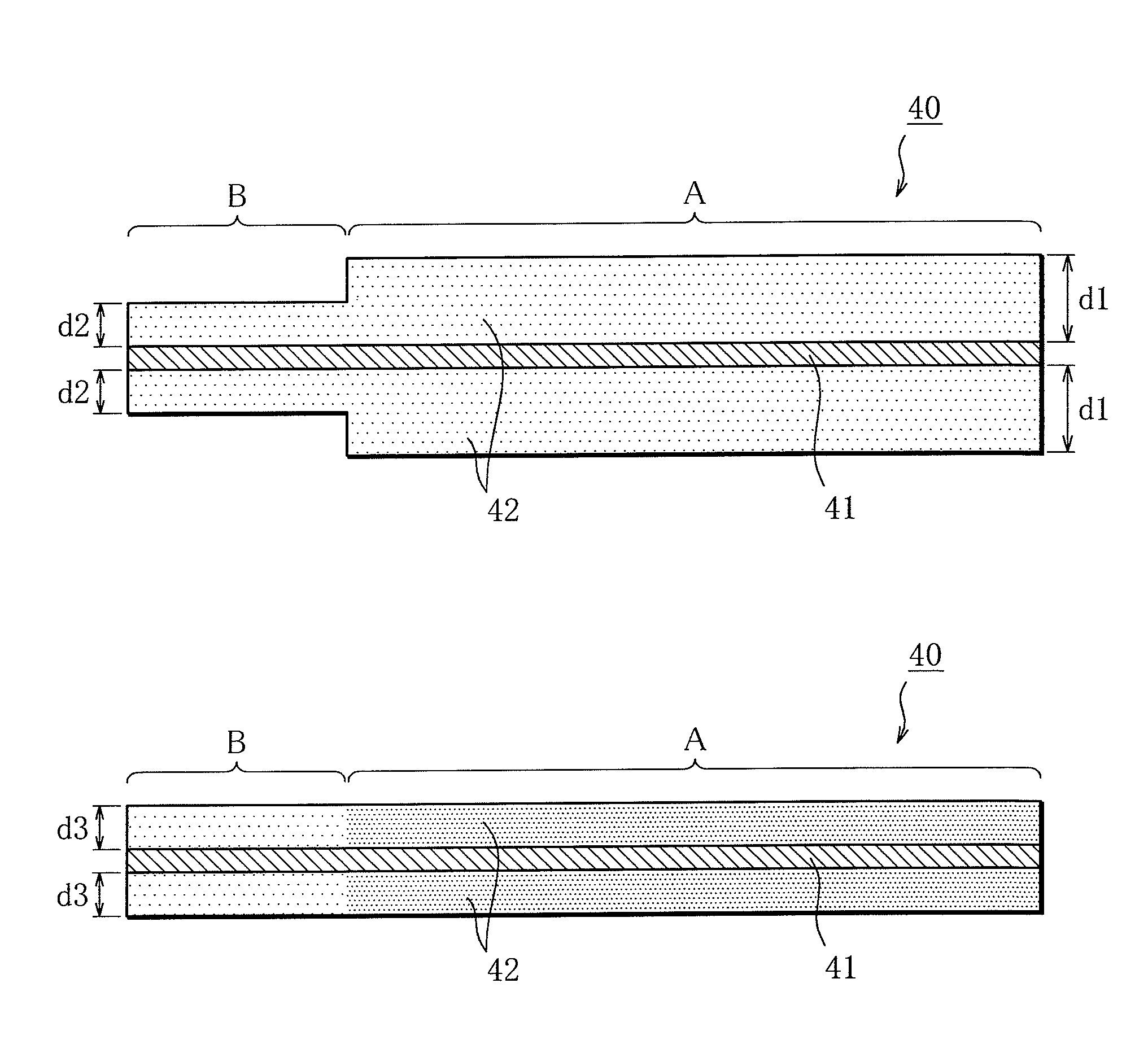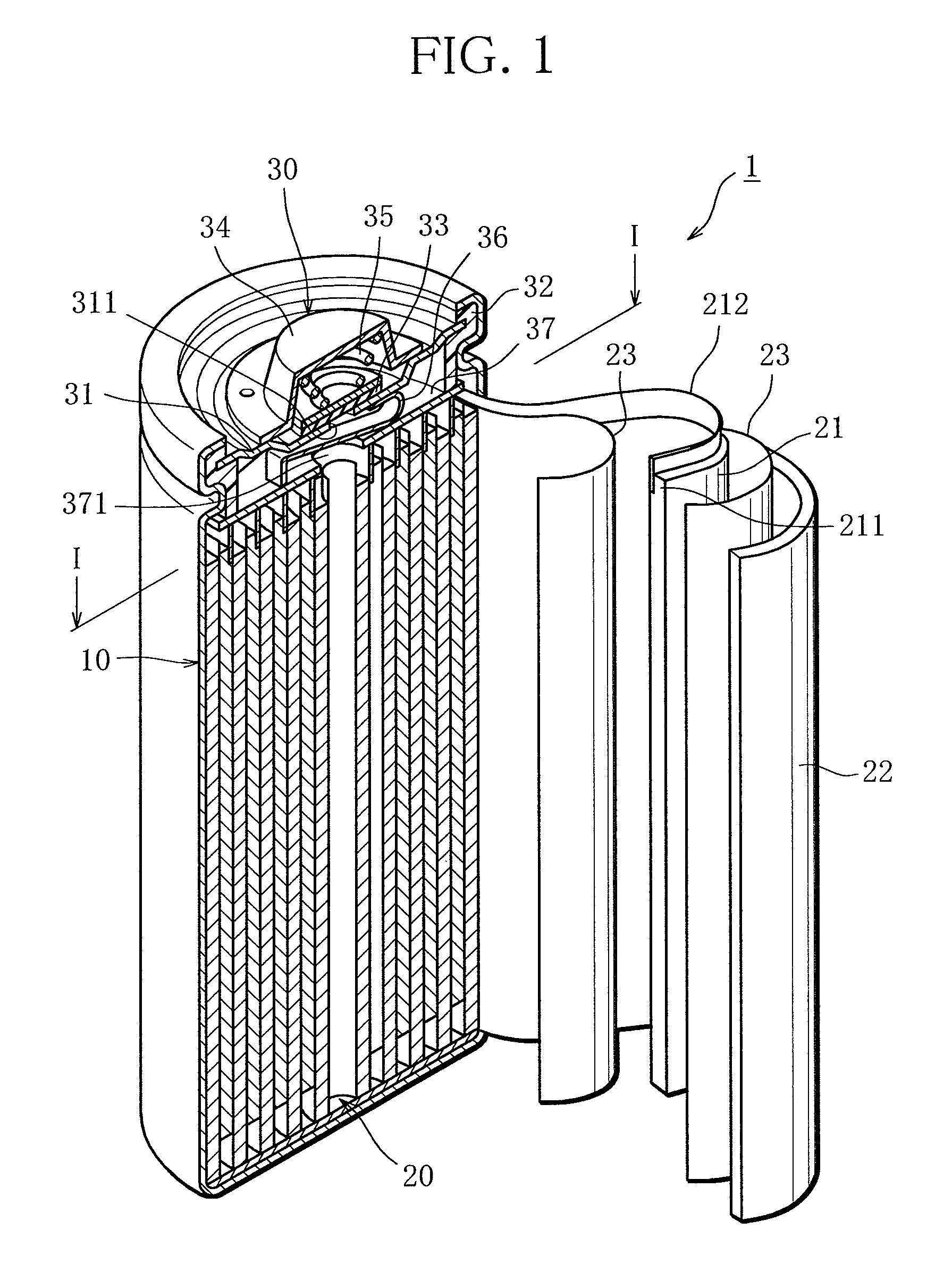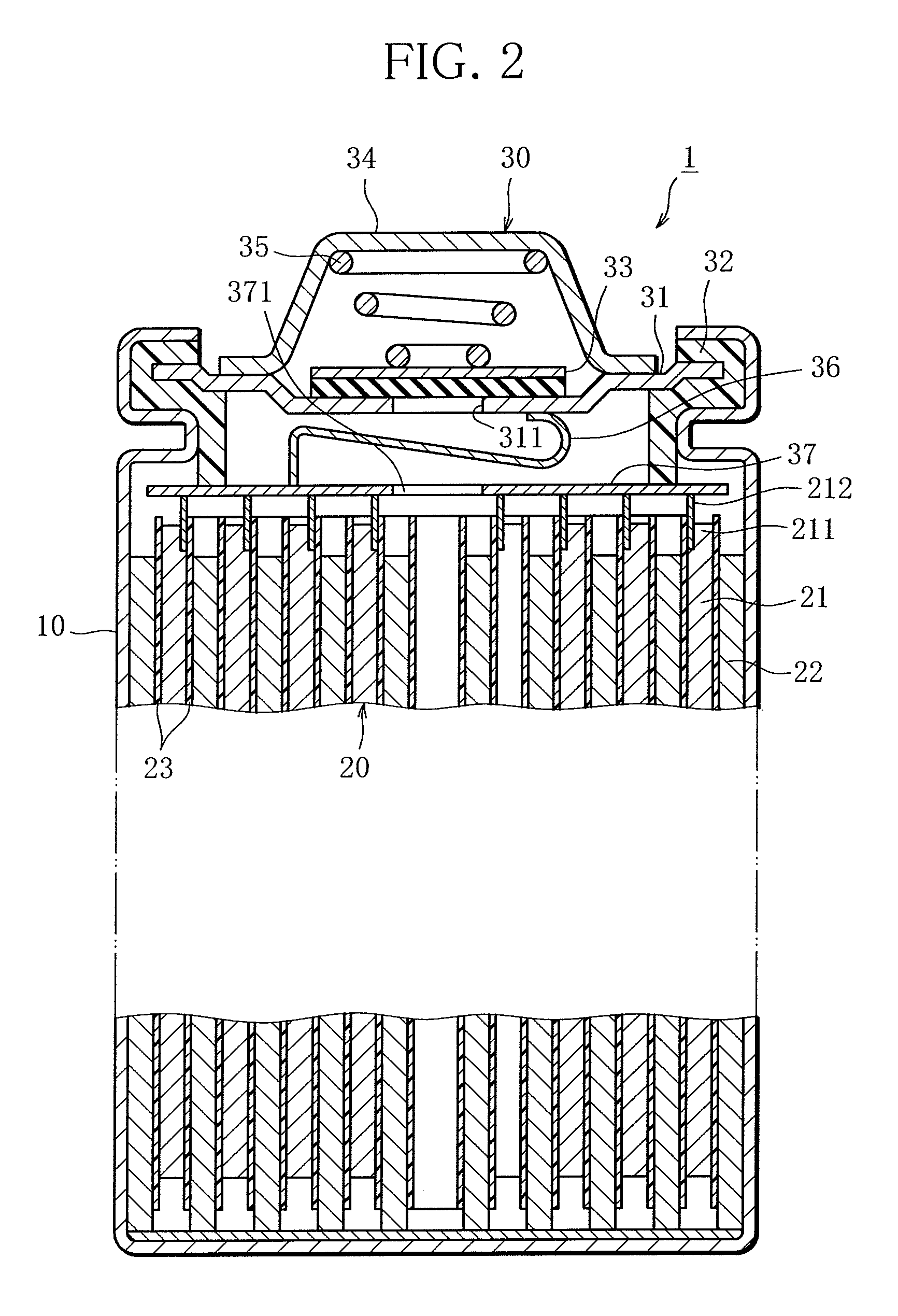Negative-electrode plate and cylindrical cell including same
a negative-electrode plate and cylindrical cell technology, applied in the field of cylindrical cells, can solve the problems of deteriorating cycle performance and high-rate discharge performance, failure of the whole electrode body, increased time taken to put the required amount of electrolyte, etc., and achieve the effect of increasing the efficiency of manufactur
- Summary
- Abstract
- Description
- Claims
- Application Information
AI Technical Summary
Benefits of technology
Problems solved by technology
Method used
Image
Examples
Embodiment Construction
[0029]With reference to the drawings attached, an embodiment of the present invention will be described below.
Structure of Nickel-Hydrogen Secondary Cell
[0030]Referring to FIGS. 1 to 3, structure of a nickel-hydrogen secondary cell 1 will be described.
[0031]FIG. 1 is a perspective view showing a vertical cross-section of the nickel-hydrogen secondary cell 1, FIG. 2 a plan view showing a transverse cross-section of the nickel-hydrogen secondary cell 1, and FIG. 3 a transverse cross-sectional view of the nickel-hydrogen secondary cell 1 along line I-I indicated in FIG. 1.
[0032]The cylindrical nickel-hydrogen secondary cell 1 exemplifying the “cylindrical cell” comprises an outer can 10, an electrode body 20 and a lid structure 30. The outer can 10 is an electrically-conductive bottomed cylindrical member open at the top. The electrode body 20 is formed by stacking a positive-electrode plate 21 and a negative-electrode plate 22 with a separator 23 interposed between and rolling them in...
PUM
| Property | Measurement | Unit |
|---|---|---|
| density | aaaaa | aaaaa |
| density | aaaaa | aaaaa |
| density | aaaaa | aaaaa |
Abstract
Description
Claims
Application Information
 Login to View More
Login to View More - R&D
- Intellectual Property
- Life Sciences
- Materials
- Tech Scout
- Unparalleled Data Quality
- Higher Quality Content
- 60% Fewer Hallucinations
Browse by: Latest US Patents, China's latest patents, Technical Efficacy Thesaurus, Application Domain, Technology Topic, Popular Technical Reports.
© 2025 PatSnap. All rights reserved.Legal|Privacy policy|Modern Slavery Act Transparency Statement|Sitemap|About US| Contact US: help@patsnap.com



